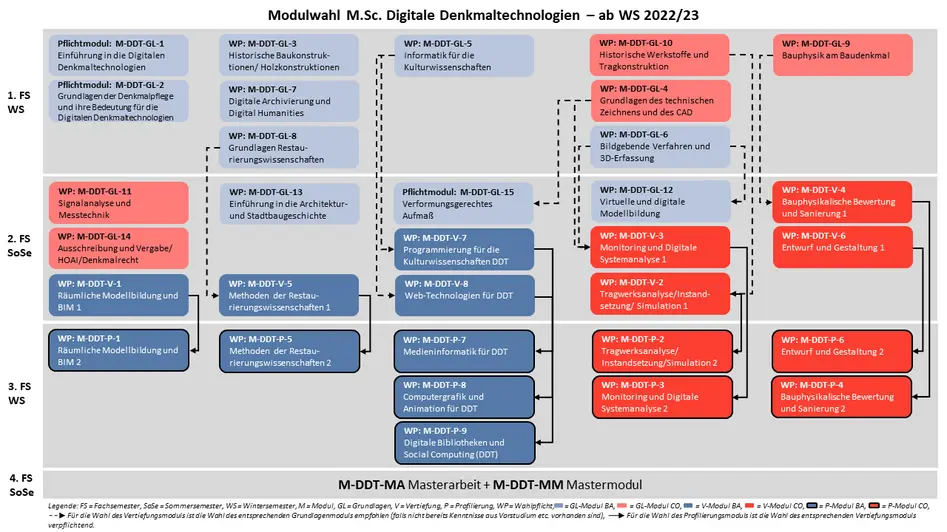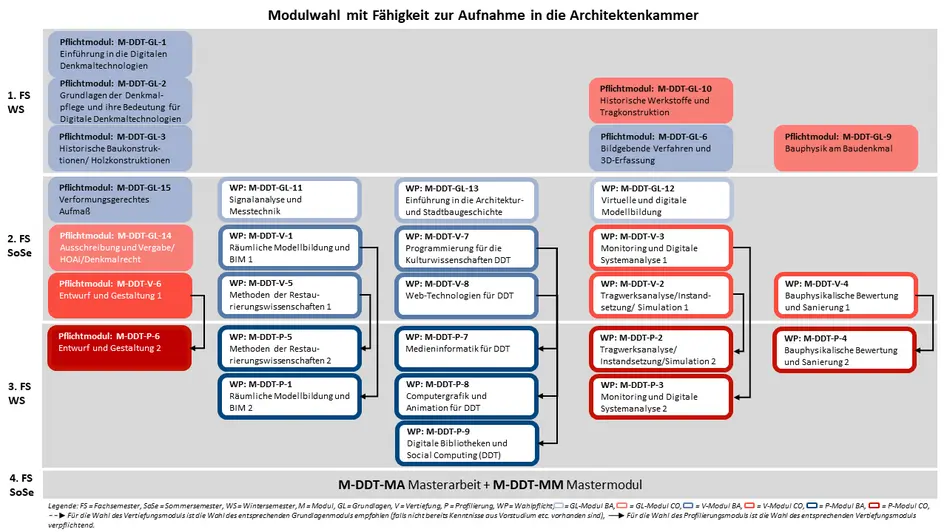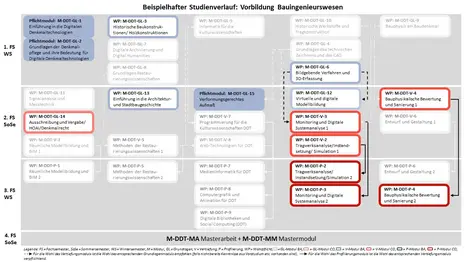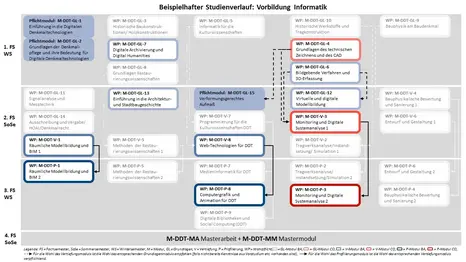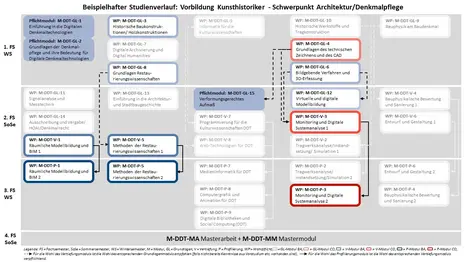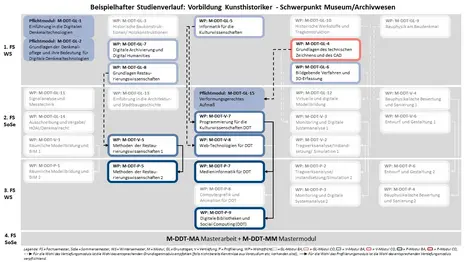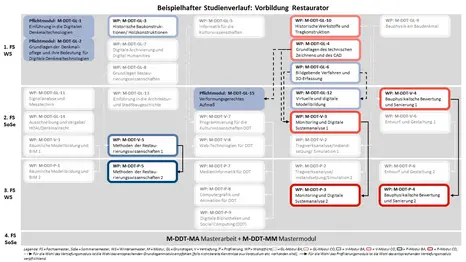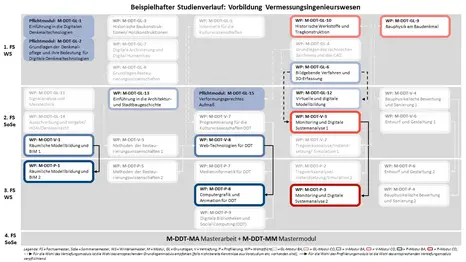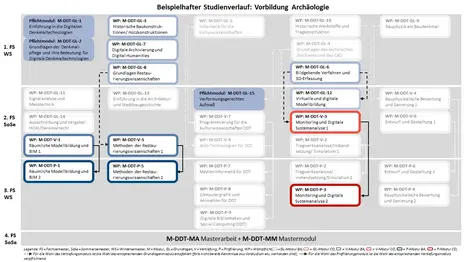Study Examination Regulations (SPO) 2022 for the masters program M.Sc. Digital Technologies in Heritage Conservation
For the winter semester 2022/23, new study examination regulations will come into force, which include some significant changes in the study structure.
More flexibility in the study programme
Are you an archaeologist who would like to learn digital surveying methods but shy away from building physics? Are you an art historian who would like to digitise the museum landscape, but don't know your way around computer science?
With the new study examination regulations, you can tailor your studies more individually to your needs and interests without necessarily having to cover all areas. You can get a taste of everything and find your own individual path. The programs’ student advisory service of this masters will be happy to support you.
This is how it works in the course of a regular time of 4-semesters (you are welcome to stretch this over up to six semesters full-time or more if you are part-time):
in the first two semesters, the foundation modules are designed to fill in the gaps in your knowledge and supplement your basic studies of your bachelor or previous degrees . These modules will also prepare you specifically for later specialisations/profiling (marked with dashed arrows in the diagram, see module handbook ) whilst helping you across the board for all modules and in your later working life.
The fundamentals M-DDT-GL-1 Introduction to Digital Technologies in Heritage, M-DDT-GL-2 Principles and Theories of Heritage Conservation and their Significance for Digital Heritage Technologies are compulsory modules and serve to show you the possibilities of Digital Technologies in Heritage Conservation and to provide you with relevant background knowledge from the field of heritage conservation to prepare you for working with heritage. Another compulsory module is M-DDT-GL-15 As-built drawing of historic buildings. If you have never made drawings in your previous studies, we recommend M-DDT-GL-4 Technical Drawing and Computer-aided Design (CAD) in advance as preparation.
In the 2nd semester, you can now choose any three specialisation modules . You are invited to try out several specialisation modules first and begin taking the lectures and seminars; the lecturers will be happy to support you in your choice. The profilingmodules in the 3rd semester continue the specialisations and follow on from the relevant 2nd semester modules (marked by solid arrows in the diagram, see the module handbook). In the 4th semester you will write your Master's thesis, accompanied by the Master's module (research methodologies and science communication).
Chamber of architects eligibility (German list of architects)
Prerequisite for entry in the list of architects specialising in architecture in the Bavarian Chamber of Architects according to Art. 4 (2) BauKaG
You have studied architecture in the Bachelor's programme, but you are still lacking ECTS to become eligible for the Chamber of Architects? With the new study examination regulations, you can achieve the requirements for entry into the list of architects with our Masters in Digital Technologies in Heritage Conservation degree programme.
What do you need to do? There are a number of modules whose enrolment is agreed with the Chamber of Architects. If you study according to the following scheme, you will automatically receive confirmation for the Chamber of Architects with your certificate. An individual examination at the Chamber of Architects is then no longer necessary. After two years of professional practice, you can then register with the Chamber.
You take all the basic modules marked "compulsory module" in red in the diagram (this means you have already completed the required 45 ECTS of the basic modules, but you are also welcome to attend other basic modules on a voluntary basis), as well as the specialisation M-DDT-V-6 ‘Architectural Design and Layout 1’ and the profiling M-DDT-P-6 ‘Architectural Design and Layout 2’. You can then freely choose two further specialisations and profiling. The Master's thesis should then be written across the board of topics, so that as many areas of the degree course as possible are included (including, for example, design).
Various options for study paths
In the following, we have compiled sample courses of study according to different previous (bachelor and/or masters) degrees or occupational groups you are aiming for, which will show you what your studies might look like. These are just examples to help in your decision-making process; your individual path can be quite different.
In the following you see examples for study paths for
- previous education in civil engineering
- Previous education in computer science
- Previous education in computer science
- Previous education in art history – focus on museum & archive studies/ Digital Humanities
- Previous education in art history – focus on architecture / heritage conservation
- Previous education in restoration/conservation
- Previous education in surveying
